As the brief pandemic summer ended and plans to ease restrictions were put on hold, I masked up and headed to a small-town thrift store that rarely has cameras but when it does, they’re typically good ones.
Being able to look up model numbers on a phone after you find something on those chaotic shelves still feels like cheating, like sneaking to the loo during a pub quiz for a quick bit of research. Most of the time it confirms your intuition about name and build quality and how it fits into its period, especially if you spend a lot of time on this website. Not this one: the name checked out, the camera itself was in good condition, but it didn’t have the heft of its more desirable early-90s peers, let alone the previous generation where leading makers threw so much talent and innovation into compacts.
It was a Nikon AF600, known in the US as the Lite Touch AF 28mm 1:3.5 Macro. I’m sure a lot of work went into that catchy name. It was certainly light to the touch.
Hamish nailed a lot of things in his review. The casing feels like it wouldn’t survive being dropped onto plush carpet. The controls are fiddly. The panorama feature made little sense then (hi, APS) and even less now. The viewfinder is a joke: it’s dim when your eye is lined up perfectly and blacks out at any kind of angle. But this one had promise: cameras that feel fragile are often better than more robust ones at showing they’ve been lightly used or treated with care. It was an easy $5 gamble. One CR123 later, the famously-flaky lens door worked perfectly. I took it as a sign.
I live in a tourist town, a brewery town, an outdoor activities town, a town with a mock chateau on its outskirts. Covid hit it like a meteorite. Some places closed permanently within weeks. Others tried to adapt and eventually gave up. Then the tourists started coming back but limited themselves to the downtown attractions and breweries and the mock chateau, and locals did their best to avoid them unless their jobs required it. (For a lot of them, their jobs required it.)
But on the west side of the river, there’s a long street known for its independent shops and restaurants. Sometimes it feels weird, sometimes absurdly hipsterish, sometimes charming, often all of those at once. Almost every place on that street was imperilled from the moment things closed down, but thanks to a combination of local support and political pressure on the tourist board to provide relief funds, most of them are still there today.
It is a street photography street. If someone were to design a test track for apprentice street photographers, it would look a lot like this one. More than that, it is the kind of street where you are likely to bump into a couple of street photographers with quirky cameras and you’ll exchange a brief look and a nod and move on and a few weeks later you’ll check the location tag on Flickr or Instagram and see whether they noticed the same things as you.
I took the AF600 out for a walk there on a cloudless October afternoon with a roll of Fuji C200. Even in good light the viewfinder remained terrible, and left me shooting mostly from quick glances and instinct. After a while, the pursuit of shots became secondary: people were out and following the guidelines and there was a tangible collective intention. If we can stick together, we might get to the other side with all this still here.
That roll sat in a drawer over the winter, but a little stimulus money turned it and a few others into images. The ones from the AF600 surprised me the most. I once had a beloved Yashica T5 that was stolen when I lent it to a friend. (There is a ridiculous story about that camera I won’t tell here.) I’ve owned a Contax T2 since before everything T2 got stupid; I refuse to be part of that debate. With both, the lenses are able to suck in all the colour and contrast of a scene and amplify them. This silly little Nikon does the same when it can gorge on light. The lens is pin-sharp; the autofocus and metering do their job well. It delivered so much more than I expected, more than enough to offset its quirks.
I drove down that street recently, but didn’t have time to stop. The restrictions are easing and the weather makes it pleasant again to be outside. Some of the murals have been expanded. There are more hand-painted signs urging solidarity as the tide starts to turn. There was probably someone doing street photography. Why not?
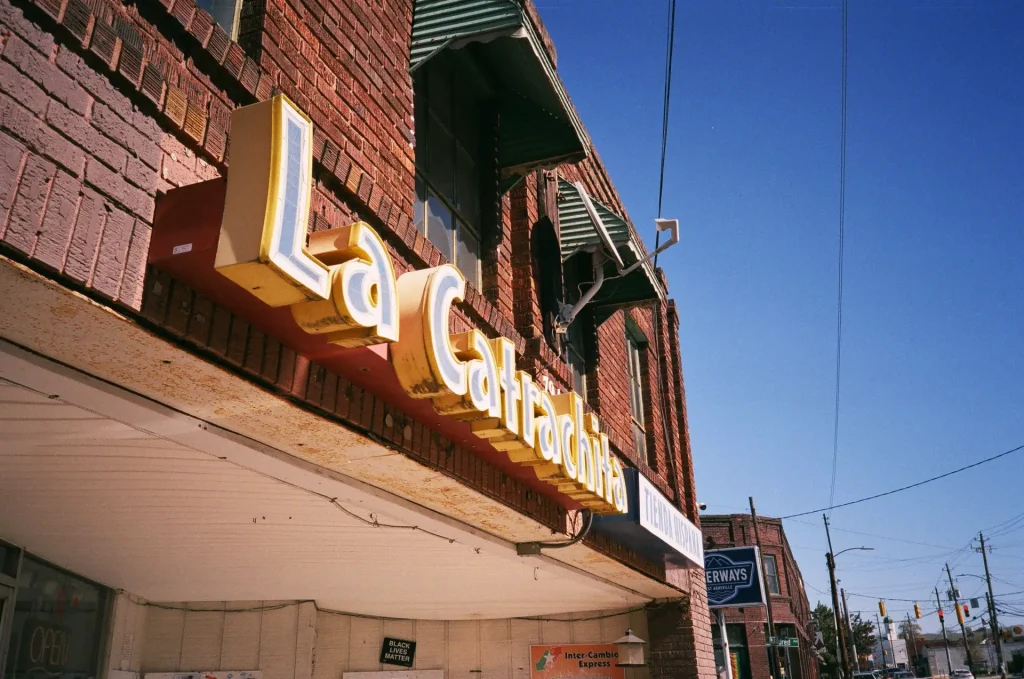
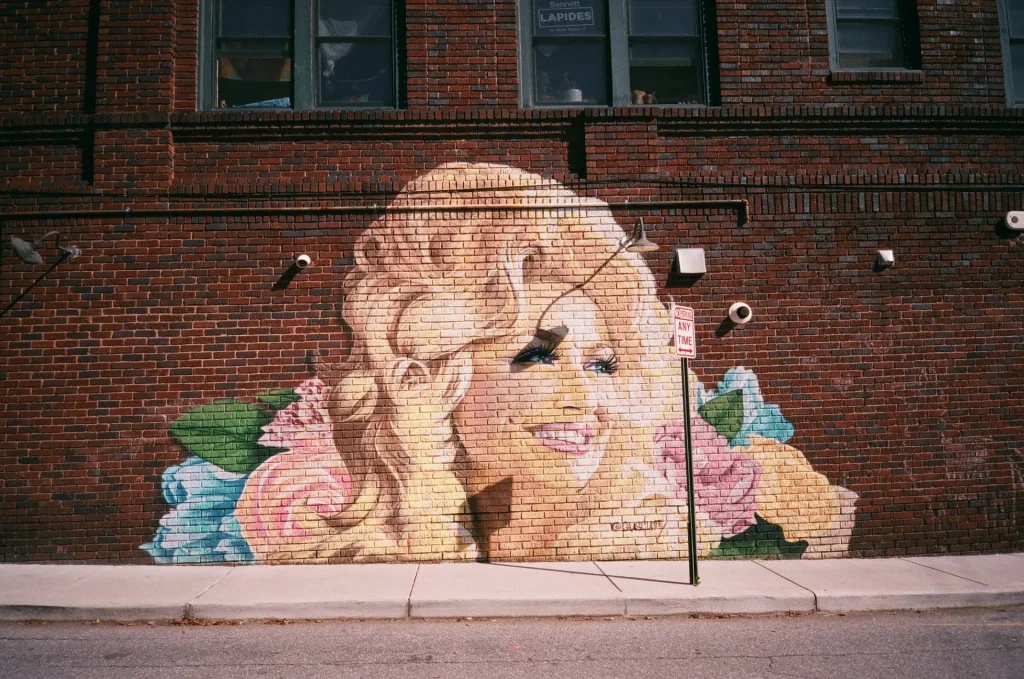
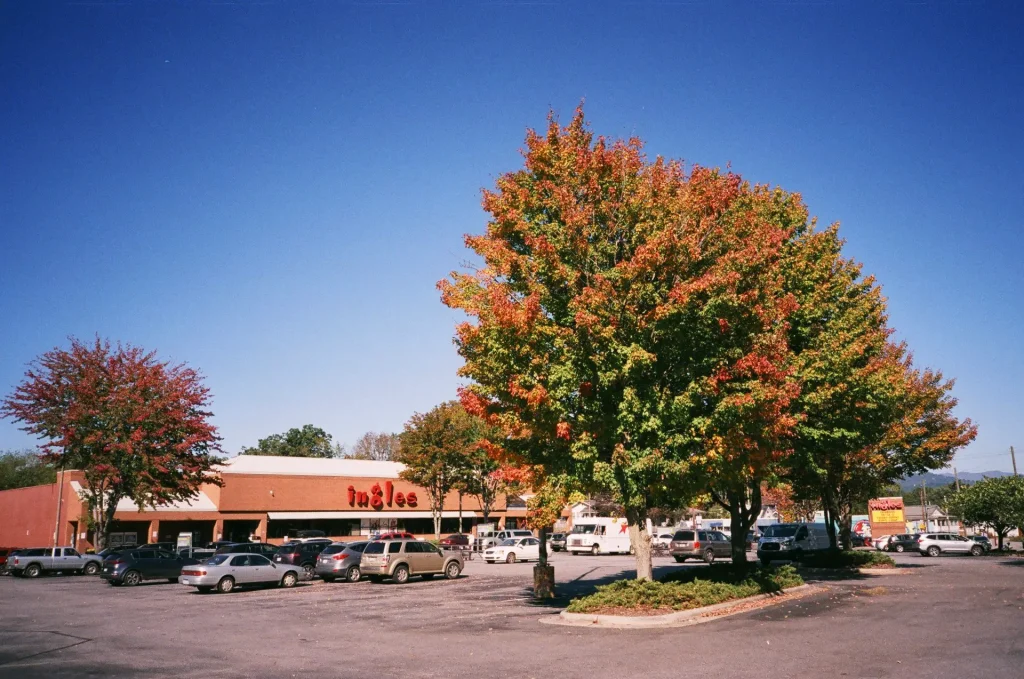
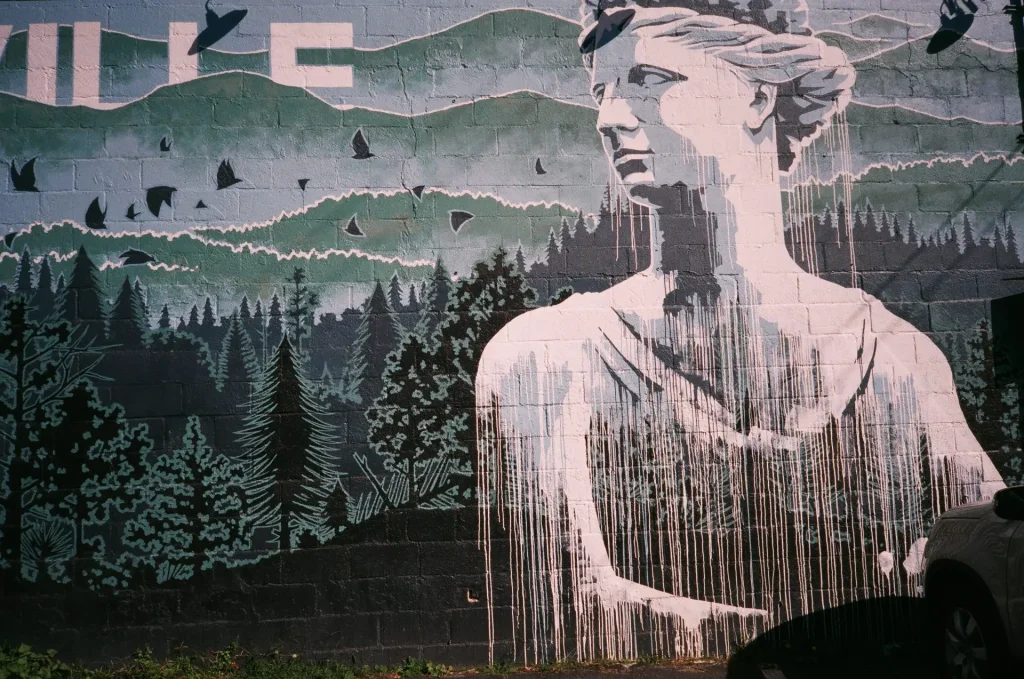
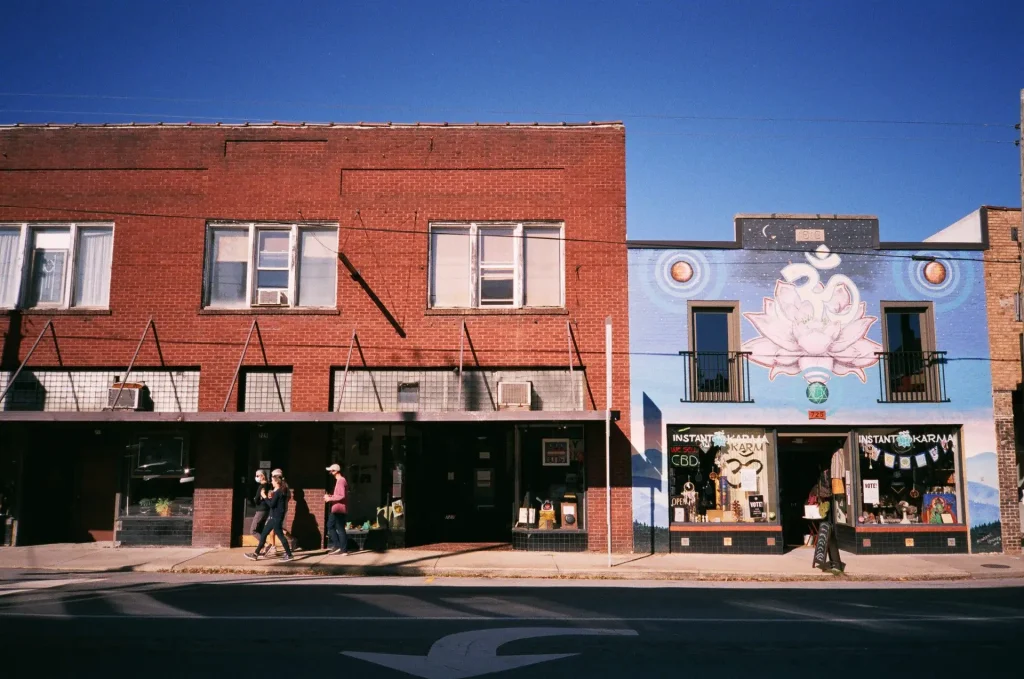
Postscript: I finished the roll later that month on a trip to Mount Mitchell, the highest point in the US east of the Mississippi. That outing was better at revealing the AF600’s weaknesses: it struggled with ISO 200 film in the dappled light of wooded trails, though that’s hardly surprising; when focusing on close subjects, its bokeh is mostly blur. But here’s a bonus frame from the mountaintop.
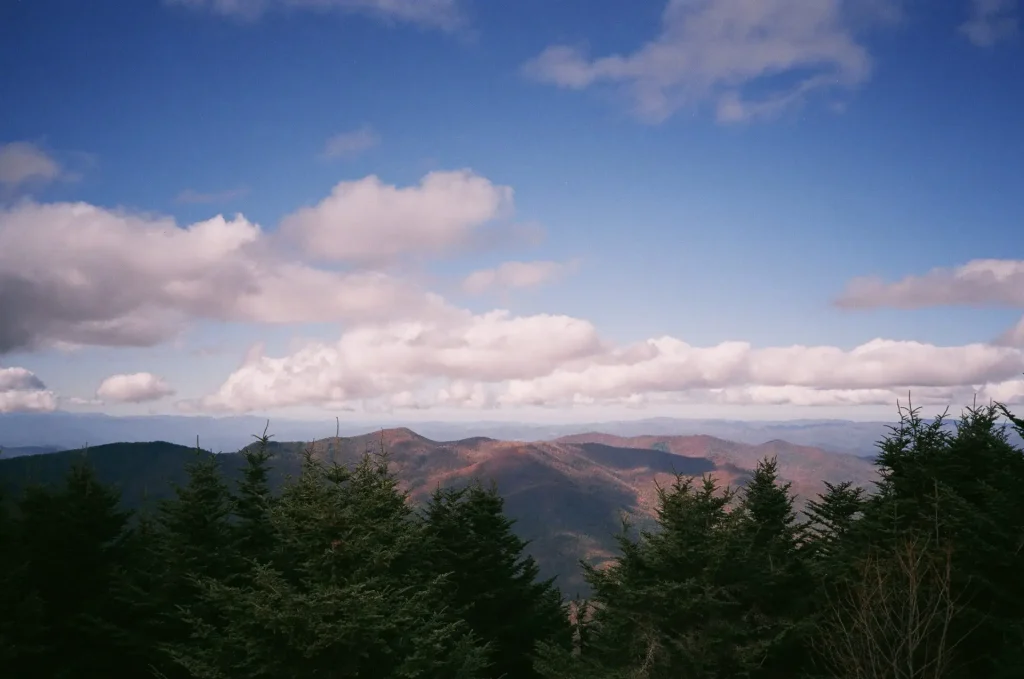
See more from that roll on Flickr, where I really need to get back to adding photos.
Share this post:
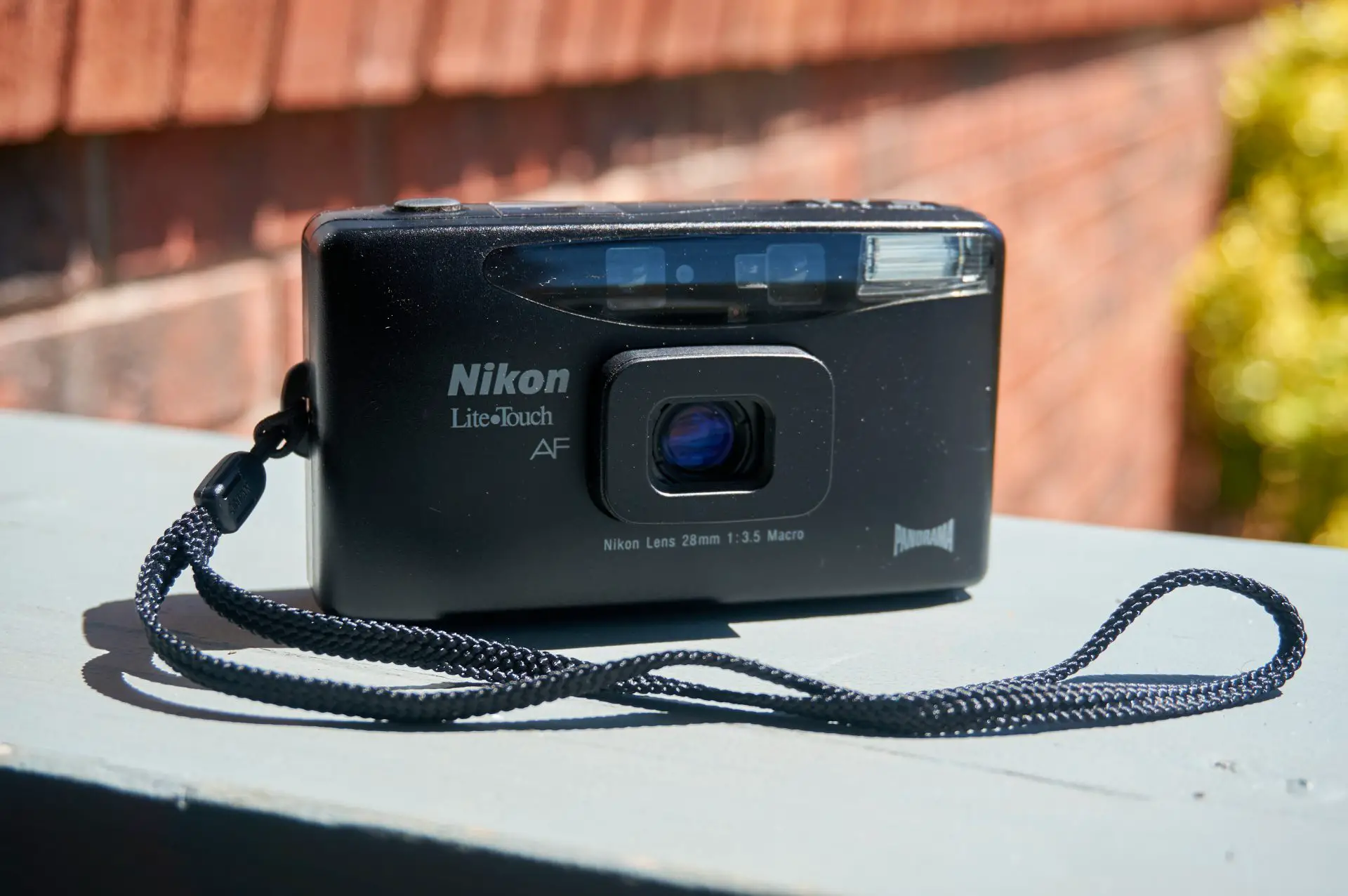








Comments
Devon C Adams on 5 Frames in the Pandemic Autumn with a Nikon Lite Touch AF600 – By Nick Sweeney
Comment posted: 30/05/2021
Bill on 5 Frames in the Pandemic Autumn with a Nikon Lite Touch AF600 – By Nick Sweeney
Comment posted: 30/05/2021
Comment posted: 30/05/2021
Alex Vye on 5 Frames in the Pandemic Autumn with a Nikon Lite Touch AF600 – By Nick Sweeney
Comment posted: 31/05/2021
crazyhorsea on 5 Frames in the Pandemic Autumn with a Nikon Lite Touch AF600 – By Nick Sweeney
Comment posted: 02/06/2021
Mats on 5 Frames in the Pandemic Autumn with a Nikon Lite Touch AF600 – By Nick Sweeney
Comment posted: 02/06/2021